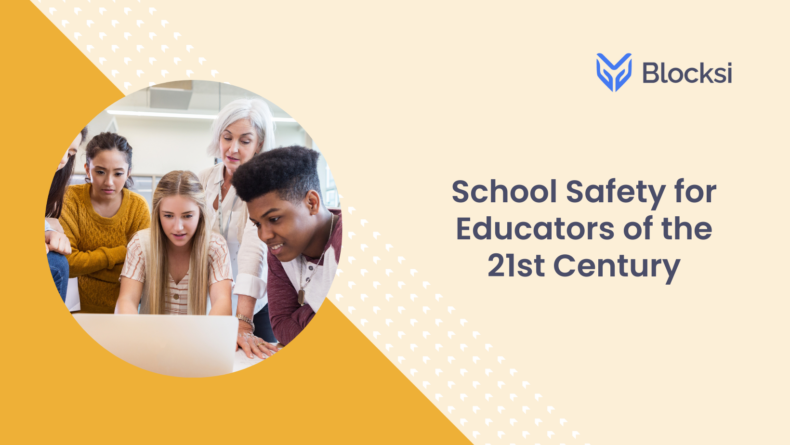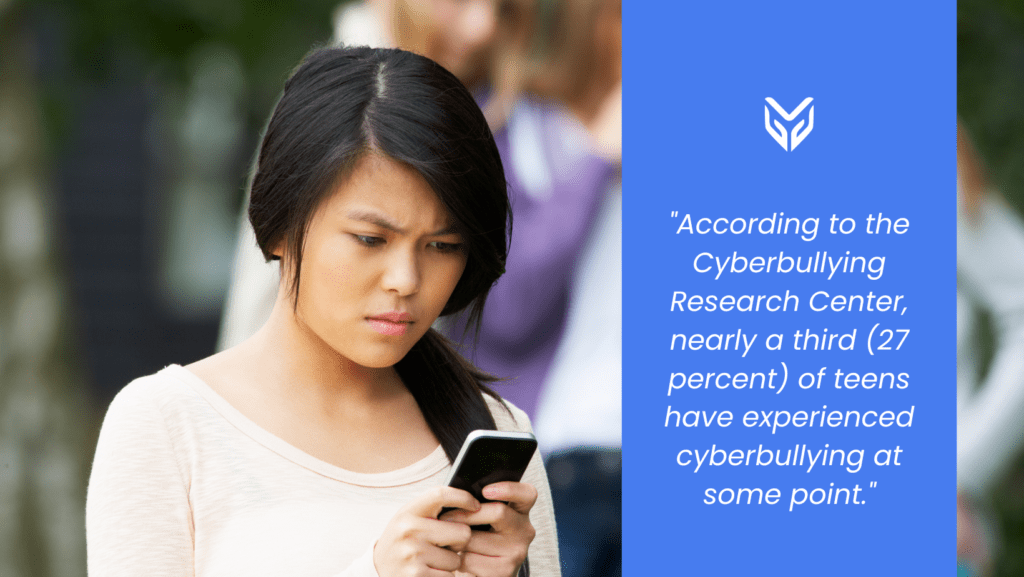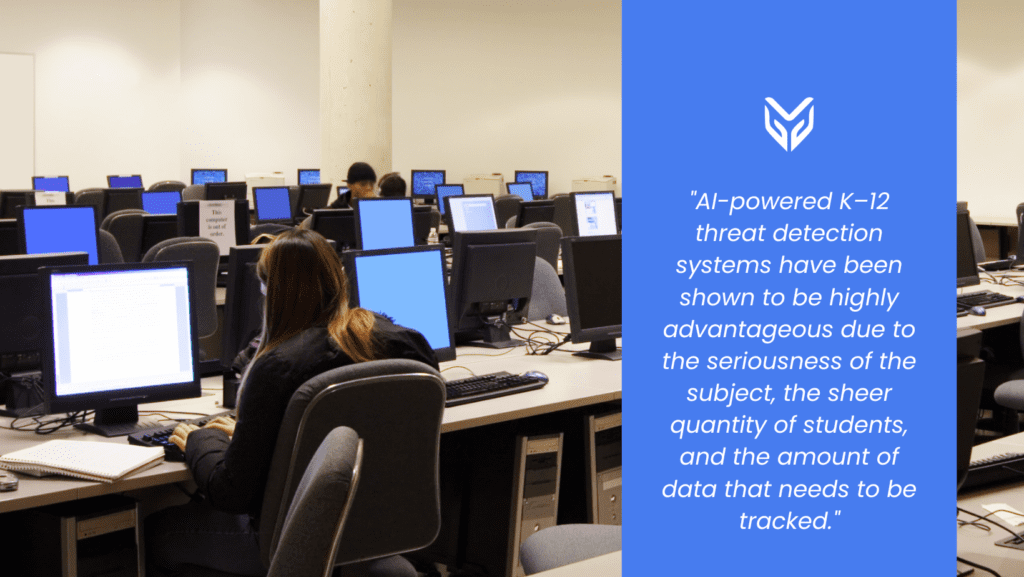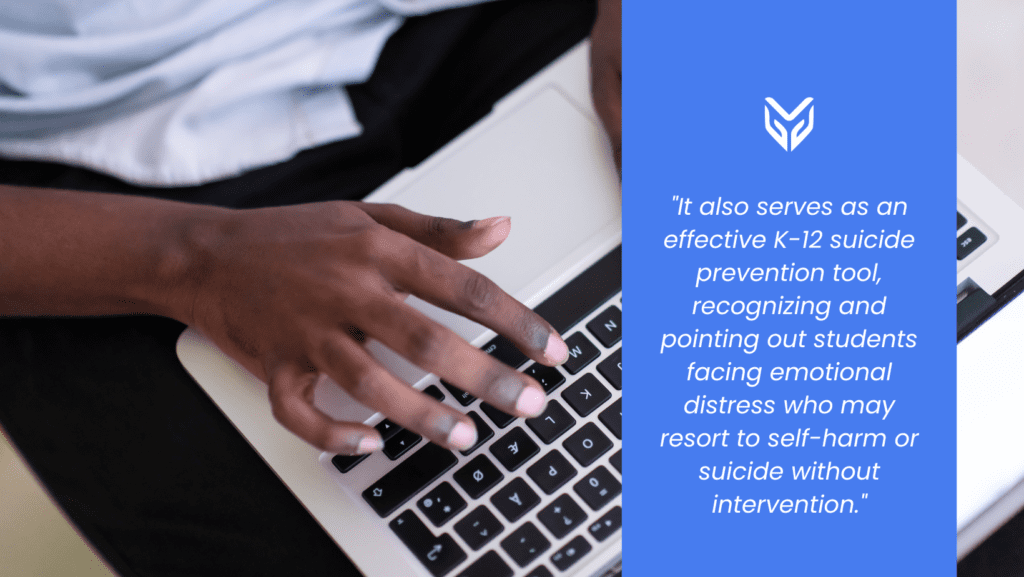NEWS
School Safety for Educators of the 21st Century

Modern technologies bring both modern solutions and modern problems, and education in the 21st century is no exception to that. Prioritizing school safety has become an imperative concern for educators, tech directors, and administrators alike. The 21st century presents a unique set of challenges, from the specter of school violence to the insidious threat of cyberbullying. As we navigate this dynamic era, we must empower educators and tech directors with effective strategies to safeguard students. These are some insights into the multifaceted realm of school safety, focusing on K-12 suicide prevention, identifying cyberbullying warning signs, and proactive methods for its prevention.
Understanding the Significance of School Safety
School safety is a multi-dimensional concept that includes various aspects of well-being within educational institutions. Besides students’ physical safety, it also involves their emotional and psychological well-being. Today’s schools face various challenges that demand proactive measures to protect those involved in the educational process. One of the most worrying challenges is school violence and cyberbullying.
School Violence
The escalation of school violence in the 21st century is a distressing reality. Consider this: during the 2019-2020 school year, an alarming 77 percent of public schools documented one or more crime incidents, with a staggering tally of 1.4 million recorded cases. And it’s important to note that not all incidents are even reported. This spectrum of violence encompasses various forms, from instances of bullying to graver threats, including physical harm and, tragically, even the specter of shootings. In this climate, it’s incumbent upon educators to maintain unwavering vigilance in detecting potential signs of violence and taking swift, proactive measures to address them.
Cyberbullying
Another significant threat to students’ emotional well-being is cyberbullying, a form of online harassment or intimidation that kids of all ages can become victims of. According to the Cyberbullying Research Center, nearly a third (27 percent) of teens have experienced cyberbullying at some point.

The signs of cyberbullying can be subtle, making it essential for educators to stay informed and vigilant. That is why proper K-12 threat detection and content filtering must be in place—to point out students’ worrying activities, such as search queries and peer communication. Cyberbullying involves everything from harassment, sharing nude photos, encouraging self-harm, and other types of hateful posting.
Preventing Cyberbullying in Schools With Content Filtering and K-12 Threat Detection
That being said, K-12 threat detection and content filtering are two of the main ways of providing student safety in the 21st century. These tools enable schools to monitor online activities and identify potential threats or harmful content. By using content filtering, schools can restrict access to inappropriate websites and social media platforms, reducing the risk of cyberbullying incidents. K-12 threat detection systems can analyze online behavior and communication for signs of potential harm or violence, allowing schools to take immediate action.
Contrary to common beliefs, integrating technology in the classroom promotes improved learning, as it bolsters concentration, eliminates external disruptions, and facilitates more efficient information transfer. But, monitoring students’ online activities is crucial to ensure they reap technology’s benefits to the fullest.

Content filtering protects students from harm by limiting students’ access to websites and online content that may be deemed inappropriate or potentially harmful. By employing software capable of filtering content based on URLs, content categories, and the actual content itself, an additional layer of protection is established to shield students from various online risks.
Furthermore, student safety solutions like Blocksi’s, including K-12 threat detection, scan students’ online activities to detect objectionable content, including material in school emails and Google searches.
AI-powered K–12 threat detection systems have been shown to be highly advantageous due to the seriousness of the subject, the sheer quantity of students, and the amount of data that needs to be tracked. Furthermore, they can alert school authorities when a student tries to access worrying content. This empowers educators and school administrators to closely monitor students’ online activities and take appropriate actions to ensure their safety, identifying potential threats to K-12 students before any harm occurs.

21st Century School Safety in Its Highest Form
Blocksi Student Safety monitors students’ school-managed devices, promptly recognizing early warning signs, tackling online issues, and thus fostering a nurturing online environment for young users. Our intelligent AI system and expert human reviewers work as a double K-12 threat protection to prevent potential tragedies before they unfold.
The solution scans images, files, documents, search engines, chats, and drives within Google and Microsoft domains within school and school-managed devices. To offer better insight on the threat and its seriousness, the alerts are context-aware and include data before and after any alarms are activated. This furthers the reliability of threat detection and lowers the rates of false positives by combining AI and human knowledge for 24/7/365 early warnings.
It also serves as an effective K-12 suicide prevention tool, recognizing and pointing out students facing emotional distress who may resort to self-harm or suicide without intervention. This makes proactivity in identifying and addressing the signs of suicidal tendencies absolutely crucial.

Identifying Students at Risk With Highest Accuracy
In the 21st century, ensuring school safety is a complex yet vital task for educators and tech directors. School violence and cyberbullying are just a few of the many challenges faced by educational institutions today. Recognizing signs of cyberbullying and implementing strategies to prevent it are essential to creating a safe learning environment. Moreover, K-12 threat detection systems are of utmost importance, enabling educators to be vigilant in identifying signs of distress and providing the necessary technological support—scanning students’ digital spaces and detecting threats that could otherwise remain unnoticed.
Creating a safe and inclusive educational space is a collective effort that involves educators, tech directors, parents, and the broader community. To find out more about our school safety solution, powered both by AI systems and human reviewers, reach out to us and find out how to ensure the utmost school safety and the highest protection you can give your students navigating the digital realm.
SOURCES
[1] National Center for Education Statistics: Crime, Violence, Discipline, and Safety in U.S. Public Schools in 2019-20: Findings from the School Survey on Crime and Safety
[2] 5 Shocking Cyberbullying Facts That Every Parent Should Know
[3] Internet Safety for Kids: How to Protect Your Child from the Top 7 Dangers They Face Online





